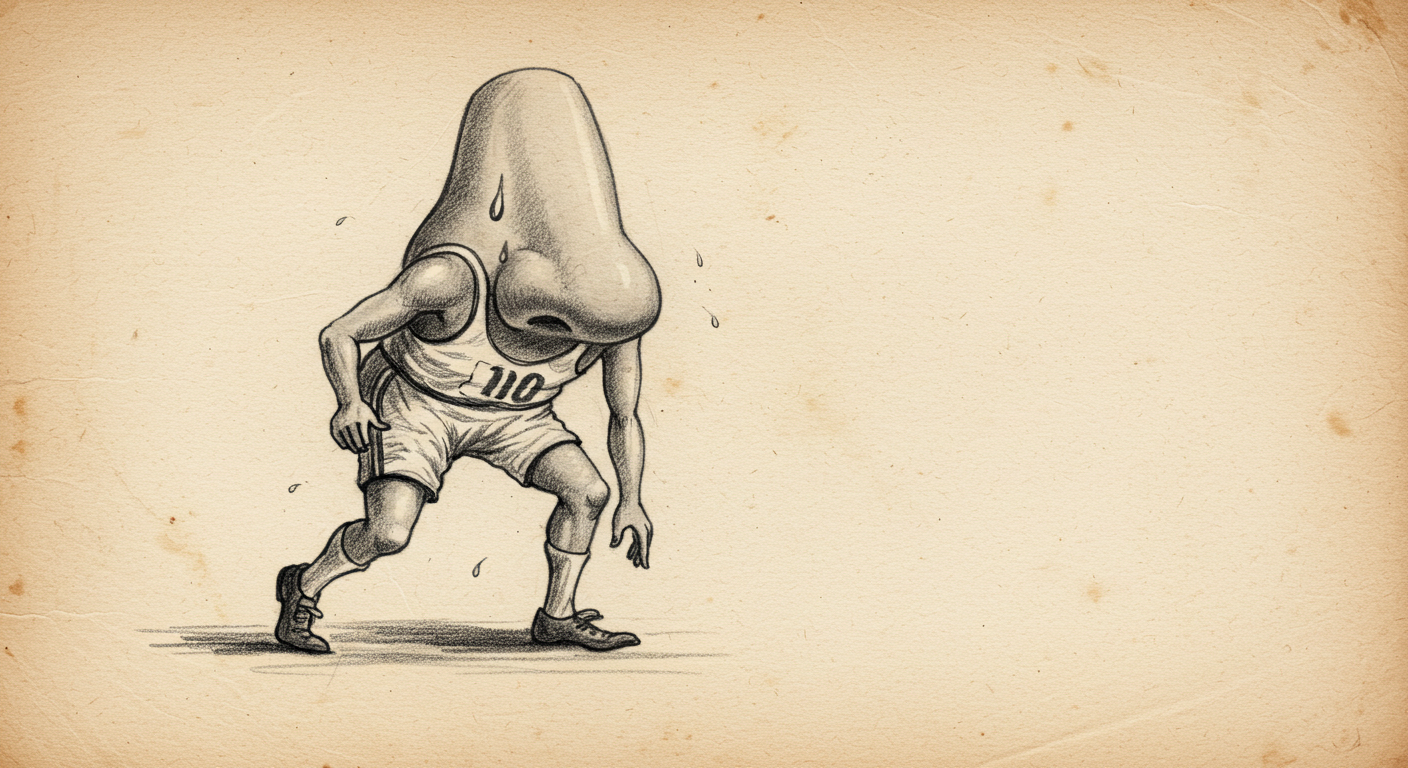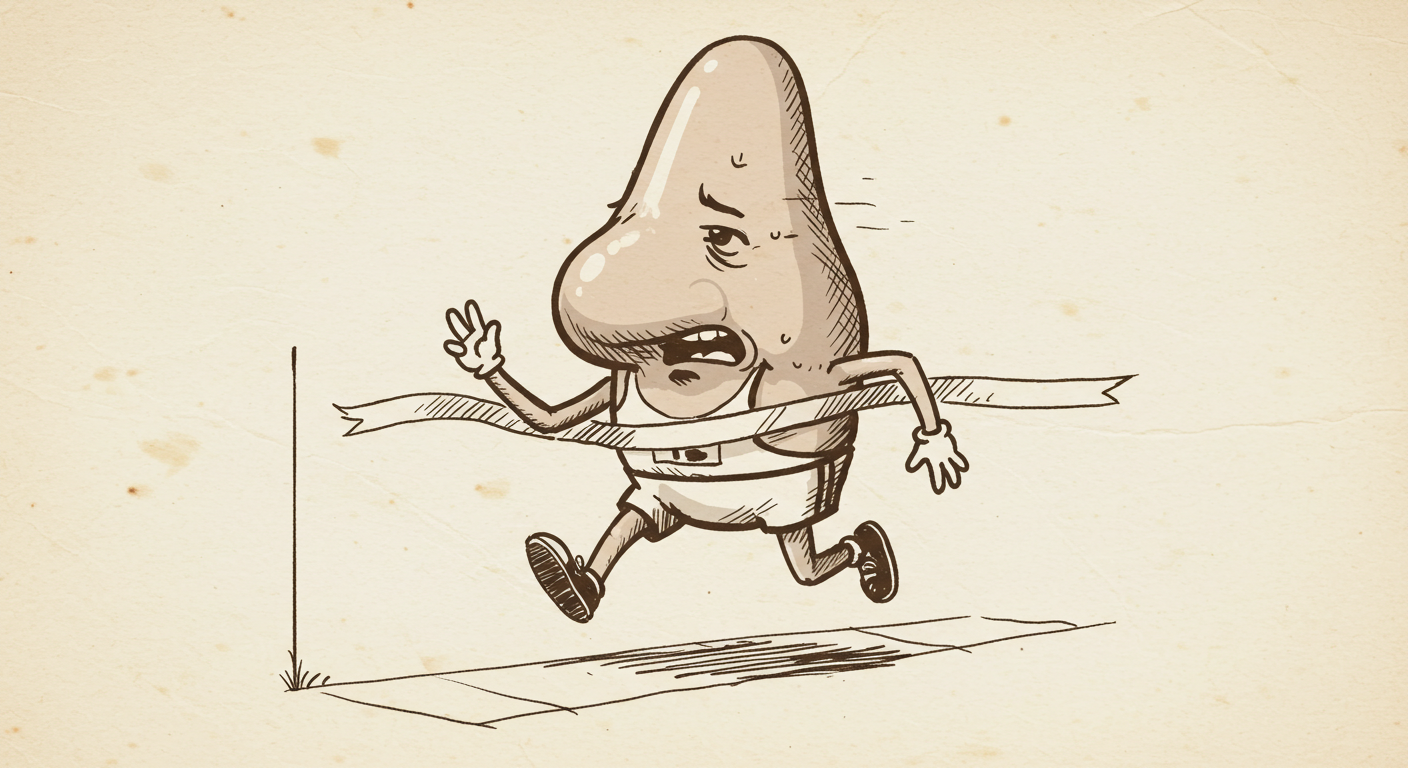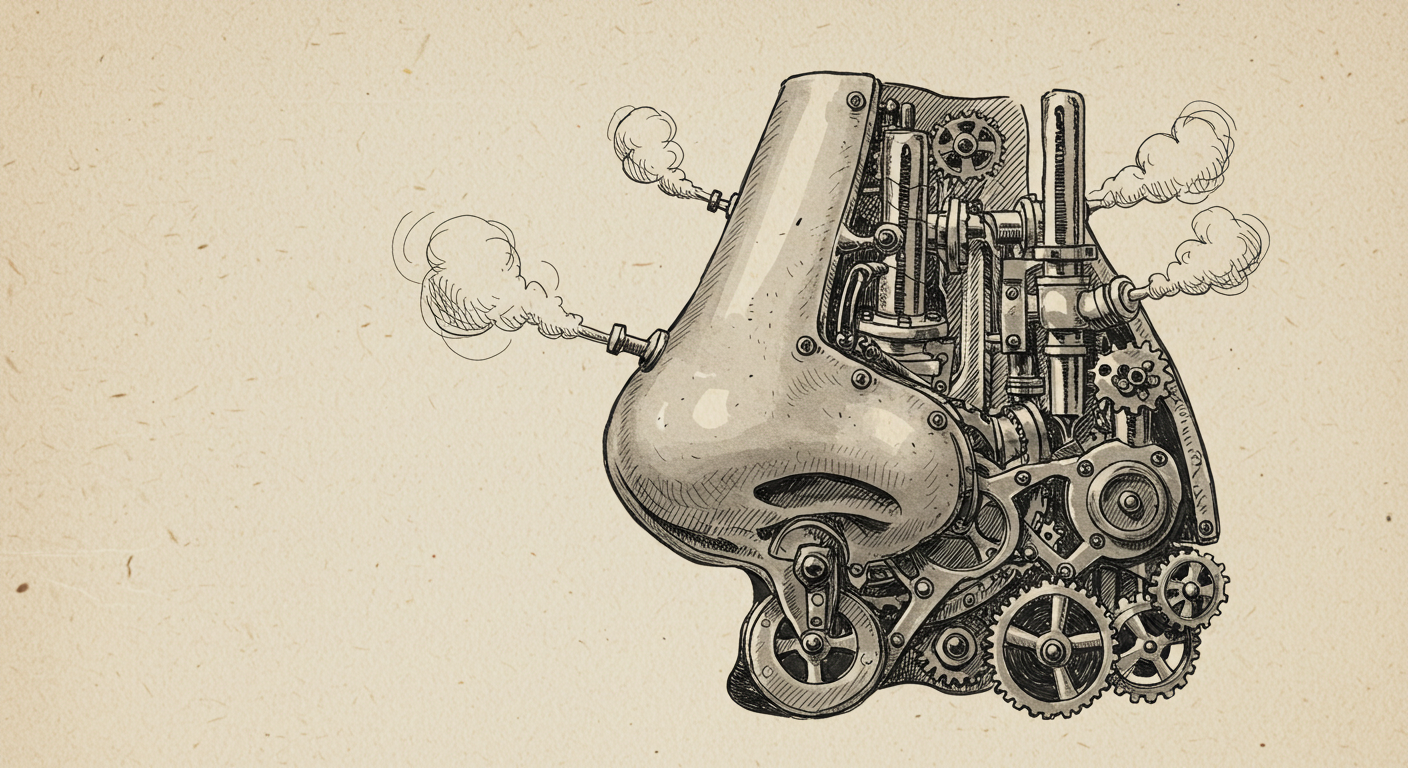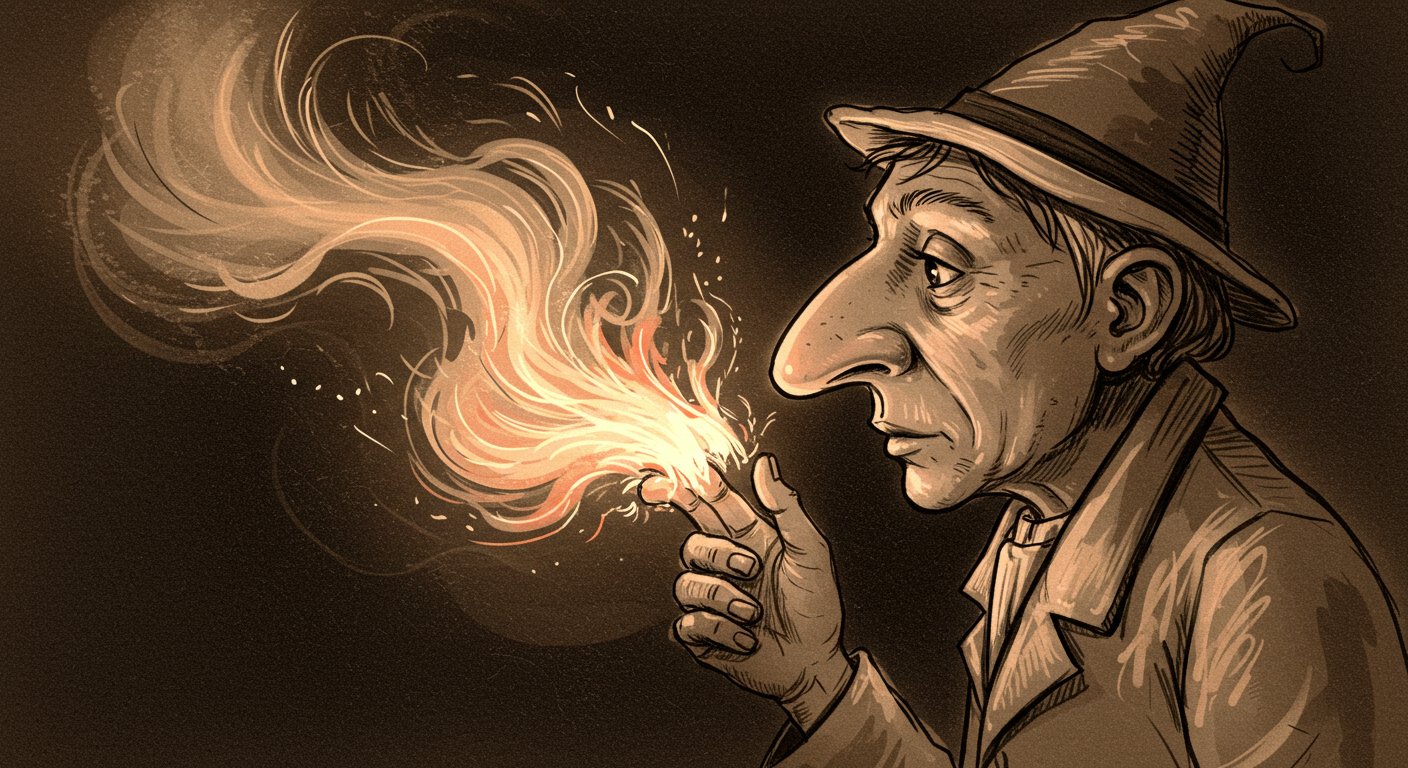Snout Burnout: The Science Behind Olfactory Fatigue
If you attend wine and spirits festivals, trade fairs, or routinely surround yourself with sample bottles, you’ll be familiar with the fact that your nose gets tired. After a succession of dipping one’s honker into a variety of glasses, the nuances of aroma begin to fade, all subtlety is lost, and eventually everything begins to smell (and taste) the same.
What you are experiencing is a sensory reality known as olfactory fatigue, or to give it it’s technical name – snout burnout. But what you may not know is there’s a lot more to it than simply your olfactory receptors needing a sit-down and a nice cup of tea.
In fact, olfactory fatigue plays a crucial role in how we perceive aromas in daily life and in professional tasting settings. Therefore, in the world of whisky, wine, fragrance, and food, understanding why our sense of smell diminishes with use is essential to not only control it, but to also explain it to others.
But what exactly causes this sensory kill switch? Why does our brain decide to dull some smells? And how can we manage it, especially in sensory professions where consistent aroma perception is critical?
Let’s take a deep dive into the inner workings of the olfactory system and uncover the science behind this sniffing slowdown.
What is Olfactory Fatigue?
Olfactory fatigue, also known as olfactory adaptation or nose-blindness, is a temporary, reversible loss of sensitivity to an odour after continuous or repeated exposure. It occurs when your olfactory system becomes less responsive to a specific scent over time. In simple terms, the more you smell something, the less you notice it.
It explains why you can become accustomed to some odours to the point of hardly noticing them and presents a challenge for sensory evaluation where many samples may require being ‘nosed’ in a single session. It’s also a consideration for drinks awards judging where each sample requires an equal opportunity.
As it turns out, olfactory fatigue isn't a fault of the system; it’s a feature. Our brains are wired to prioritise changes in the environment, especially novel or potentially hazardous stimuli. Constant, unchanging inputs get pushed to the background so the brain can focus on new information.
It’s evolutionary sense. If an odour becomes a constant feature for a period of time, what is the point in prioritising it? Instead, the brain shifts its attention to novel odours. New smells that signal a change in the environment – such as the iron being left on! However, the mechanisms behind it are far more complex than a simple redirection of the spotlight of conscious awareness. Let’s take a look.
How the Olfactory System Works
To understand fatigue, we first need to understand how we smell. Gaps remain in our understanding of how this works, but in simple terms, here’s what we do know.
Odour molecules in the air enter the nose and bind to olfactory receptors on specialised nerve cells called olfactory sensory neurons (OSNs), located high in the nasal cavity.
Each OSN expresses one type of odour receptor, and each receptor type is tuned to specific molecular features. When a molecule binds, it triggers an electrical signal that travels to the olfactory bulb, the brain’s first processing station. From there, signals move to higher brain areas such as the piriform cortex, orbitofrontal cortex, amygdala, and hippocampus – regions involved in perception, memory, and emotion.
This multi-level pathway means that smelling isn't just a chemical process; it's deeply intertwined with cognition, mood, and memory. But when we begin to look at the mechanisms of snout burnout, things get a little more technical.
The Dual Mechanisms of Olfactory Fatigue
Olfactory fatigue operates on two interconnected levels:
1. Peripheral Adaptation (In Your Nose Fatigue)
At the level of the OSNs, repeated exposure to an odourant causes a form of desensitisation. This involves intracellular feedback loops. One of the key players are calcium ions (Ca2+), which accumulate inside the neuron during repeated stimulation and trigger a chain of events that shuts down the receptor's responsiveness.
In extreme cases, a neuron can enter what's called depolarisation block – where, much like my own brain during analysis paralysis – it becomes so overstimulated that it can no longer transmit signals.
This receptor-level adaptation is odour-specific. In other words, exposure to vanillin may cause fatigue for vanillin, but you may still detect limonene clearly.
2. Central Adaptation (In Your Brain Fatigue)
Further up the processing chain, the brain also adapts. Neurons in the olfactory bulb and higher regions like the piriform cortex begin to reduce their response to repetitive odour signals. This central habituation may be influenced by synaptic depression, inhibitory interneurons, and neuromodulators like GABA.
Central adaptation is critical because it filters what becomes conscious perception. You might still be technically 'smelling' something at the nose, but if the brain's circuits downregulate the signal, you won't perceive it consciously. Essentially, your odour processing brain regions stick their fingers in their ears and say ‘la-la-la-la’ for a period of time!
Because this type of adaptation is a learned reduction in attention or response to an odour after repeated or prolonged exposure, it is often referred to as olfactory habituation. What you may be surprised to learn is how quickly this ‘filtering’ or habituation occurs.
A study by Kim et al (2020) explored how quickly the brain responds to odour habituation, using a method called olfactory event-related potentials (ERPs). These are essentially brainwave recordings that track real-time sensory processing. What they discovered was that the brain begins filtering out familiar smells extremely quickly – within 200 milliseconds!
This supports the idea that olfactory habituation is a fast, centrally-driven process, and not just something that happens later in sensory perception. However, the rate of habituation is dependent on a number of factors, one of which being trigeminal stimulation.
Role of the Trigeminal System
Interestingly, many odours also stimulate the trigeminal nerve. Trigeminality or trigeminal stimulation refers to sensations like prickling, warmth, cooling, or irritation, which are detected by the trigeminal nerve, not the olfactory receptors. Think of the tingling from mint or the warmth from chili
These sensations often travel hand-in-hand with odour intensity and unpleasantness, meaning odours that trigger trigeminal responses tend to feel stronger and more intense. Strong irritants like ethanol demand more cognitive processing, leaving fewer resources for olfactory discrimination.
When the trigeminal system is overstimulated, the brain may quickly downregulate or suppress incoming signals, a kind of sensory emergency brake. This can result in rapid habituation to the overall aroma, particularly for subtler, more nuanced odours that get drowned out by the ethanol’s brute force.
This dual sensory fatigue has implications in whisky tasting: strong, phenolic, or high-ABV drams can trigger both olfactory and trigeminal fatigue, dulling perception quicker than gentler expressions. But of course, when it comes to high octane potable fuels such as cask strength whisky, other factors come into play too.
Smell The Burn
Ethanol, particularly at high concentrations (as in spirits or hand sanitisers), can cause inflammation, irritation, and changes to olfactory tissue, and this directly impacts smell perception. This is because ethanol is a potent irritant which can damage the olfactory epithelium (the tissue responsible for detecting odours).
Hence, with repeated exposure to such irritants we can experience a slightly blocked nose feeling that restricts airflow and one’s ability to smell. Now how about the other factors that influence olfactory fatigue?
Factors That Influence Fatigue
We don’t habituate equally to all smells. Some fade quickly from our perception; others stick around more stubbornly. Along with trigeminality, habituation is also influenced by the following factors:
Vapour pressure: how easily a substance becomes a gas. Odours with higher vapour pressure may fade faster, or saturate receptors more quickly.
Molecular weight: heavier molecules may behave differently in the nose.
Odour Activity Value (OAV): a measure of how much a molecule contributes to a smell based on its concentration vs. detection threshold.
Number of double bonds, carbon chain length, conformers, hydrophobicity: these chemical features also influence how we process and habituate to a smell, though to a lesser extent.
In addition, several variables determine how quickly and intensely olfactory fatigue sets in:
Concentration: Stronger odours can cause faster and deeper adaptation.
Duration: The longer the exposure, the greater the fatigue.
Complexity: Complex odour mixtures may prolong perception, while single-note scents fatigue faster.
Pleasantness: Interestingly, people tend to adapt faster to pleasant smells than unpleasant ones.
Individual Differences: Genetics, health, and training all play a role in how one experiences and recovers from fatigue.
What Can You Do About Olfactory Fatigue
In professions where aroma analysis is key, like whisky making, wine judging, perfumery, and flavour science, olfactory fatigue can be a major pain-in-the-honker. Missed nuances, misjudged aromas, and diminished sensitivity can skew results and cost time. Imagine a world whereby we could sniff odours indefinitely without any change to sensitivity? Unfortunately, that’s not how we are designed.
A number of anecdotal countermeasures float around to fight the war on olfactory fatigue – such as sniffing coffee beans or one’s own skin. However, now we understand a little about the mechanisms behind this adaptation or habituation, it becomes clear there is only a single solution.
In simple terms, stop smelling the types of odours you have been smelling for the past hour or so. The OSNs (olfactory sensory neurons) simply need time to recover and reset. Introducing an additional, albeit different odour, will not expedite the recovery process, it merely shifts the focus.
Likewise, olfactory habituation is a response to background odours. Removing oneself from the environment long enough for the brain to accept different odours as the background scent is the only possible measure. But remember that habituation can occur in just a few hundred milliseconds.
This is common sense stuff but strategies to mitigate fatigue include:
Rotating samples: Switching between different aroma families prevents receptor-specific fatigue.
Timed breaks: Giving the nose time to reset improves reliability.
Sample spacing: Allowing enough time between similar samples reduces cross-adaptation.
Hydration and ventilation: Dry nasal passages or poor airflow can exacerbate fatigue.
Can You Train Against It?
To an extent, yes. While you can’t eliminate olfactory fatigue, you can train your brain to recognise the early signs, adjust your pacing, and build mental representations that support more efficient scent recognition.
Sensory training programmes often include exercises in odour differentiation, identification, and memory recall. Over time, trained professionals become better at detecting and interpreting faint or fading aromas. However, even the most seasoned noses need to respect the biological limits.
A Nose for the Future
As we learn more about the neurology and psychophysics of smell, we're beginning to uncover just how sophisticated our olfactory systems truly are. Olfactory fatigue isn’t just a sensory glitch, it's an elegant system of prioritisation and protection.
For drinks professionals at the high abv end of the spectrum, understanding how and why this adaptation occurs can make all the difference in product development, quality control, and consumer engagement.
After all, if we want to truly appreciate what’s in the glass, we need to know when our noses have simply had enough.
Conclusion
Olfactory fatigue is a natural, necessary, and often overlooked part of aroma perception. Whether you're nosing a dram, judging wine, or guiding a visitor through a tasting and tour, knowing how olfactory fatigue works, and how to work around it, is key to keeping your sensory edge sharp – or indeed that of your guests.
This is why we emphasise understanding olfactory fatigue in our training workshops for flavour professionals. Get in touch to find out more.








